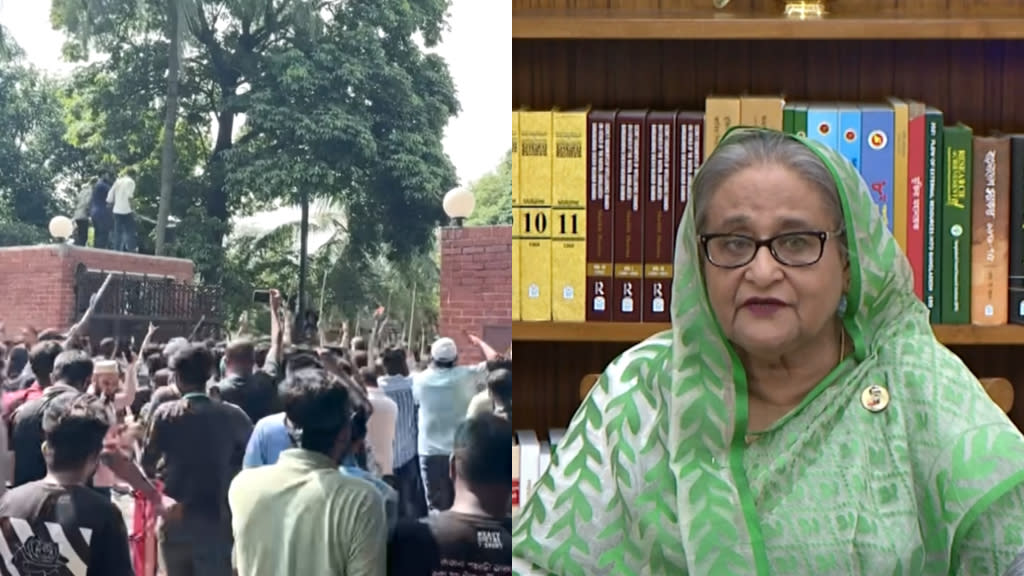Bangladesh parliament dissolved after prime minister flees to India

- Oops!Something went wrong.Please try again later.
[Source]
Bangladesh’s political landscape faces a seismic shift after Prime Minister Sheikh Hasina resigned and fled to India following weeks of intense, student-led protests that reportedly resulted in over 400 deaths. The ongoing unrest, fueled by the reinstatement of the controversial job quota system, ultimately led to the dissolution of parliament and the establishment of an interim government.
Resignation and flight: Hasina resigned on Monday and escaped to India after protesters stormed her residence, marking the end of her 15-year rule. General Waker-uz-Zaman, the army chief, confirmed her resignation and announced the formation of an interim government. “Whatever demands you have we will fulfill and bring back peace to the nation,” he assured protesters while calling for an end to the violence. Protesters stormed Hasina's residence following her departure.
Dissolution of parliament: President Mohammed Shahabuddin dissolved parliament on Tuesday in response to a key demand of the protesters. Former Prime Minister Khaleda Zia, a long-time rival of Hasina, was released from house arrest. Nobel laureate Muhammad Yunus was proposed to lead the interim government, a suggestion he accepted. “When the students who sacrificed so much are requesting me to step in at this difficult juncture, how can I refuse?” he said.
Download the NextShark App:
Want to keep up to date on Asian American News? Download the NextShark App today!

